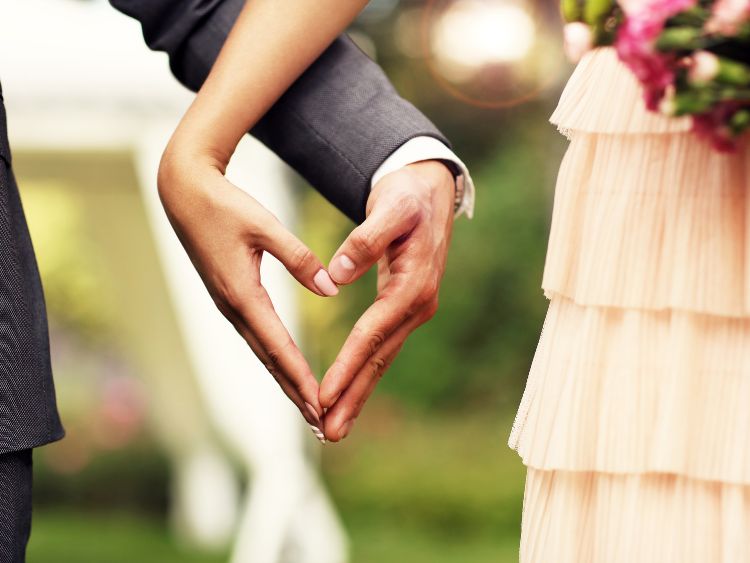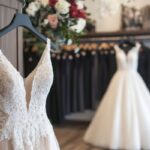Semi-Formal vs. Formal: Understanding the Differences
In the ever-evolving world of fashion, understanding the distinction between semi-formal and formal attire is crucial. Whether you’re dressing for a wedding, corporate event, or a night out, knowing the difference can make or break your outfit. This guide will help you navigate the nuanced world of semi-formal vs. formal dress codes, ensuring you always look your best, no matter the occasion.
Ah, the age-old question: what’s the difference between semi-formal and formal attire? If you’ve ever found yourself staring blankly at an invitation that says “semi-formal” or “formal,” you’re not alone. The confusion surrounding these terms is widespread, but fear not! By the end of this article, you’ll be a pro at distinguishing between the two and will never have to second-guess your outfit choices again.
The Basics: What Is Semi-Formal Attire?
Semi-formal attire sits comfortably between casual and formal dress codes. It’s less rigid than formal wear but still maintains a level of sophistication. Think of semi-formal as polished and stylish without being overly extravagant. It’s the kind of outfit you’d wear to a cocktail party, a fancy dinner, or a wedding where the dress code isn’t black tie.
Key Elements of Semi-Formal Attire:
- Men: A dark suit (black, navy, or charcoal) paired with a dress shirt, tie optional, and polished dress shoes. A vest can be added for a touch of flair.
- Women: A cocktail dress, dressy skirt and blouse combination, or a pantsuit. Heels or dressy flats are appropriate, and accessories should be elegant but not overpowering.
The Essentials: What Is Formal Attire?
Formal attire, often referred to as “black tie,” is the epitome of elegance and sophistication. This dress code is reserved for the most prestigious events, where the expectation is for guests to dress to the nines. Formal attire leaves little room for interpretation; it’s about adhering to tradition and showcasing your best.
Key Elements of Formal Attire:
- Men: A tuxedo with a black bow tie, cummerbund or vest, and patent leather shoes. A white dress shirt and cufflinks are standard, with the option of adding a formal waistcoat.
- Women: A full-length evening gown, often in luxurious fabrics like silk or velvet. Elegant accessories, high heels, and sometimes gloves are appropriate. Hair and makeup should be polished, completing the look of timeless sophistication.
Semi-Formal vs. Formal: The Key Differences
Now that we’ve covered the basics of both dress codes, let’s delve into the key differences between semi-formal and formal attire. Understanding these distinctions is crucial to mastering the art of dressing for any occasion.
1. Level of Formality
- Semi-Formal: This dress code allows for more flexibility and personal expression. While it demands a certain level of polish, it doesn’t require the same level of adherence to tradition as formal attire. You can experiment with colors, patterns, and accessories to showcase your personality.
- Formal: Formal wear is steeped in tradition. It’s about looking polished, elegant, and adhering to strict guidelines. There’s little room for personal flair—think classic, timeless styles.
2. Suit and Tie vs. Tuxedo
- Semi-Formal: Men can wear a suit and tie, but a tuxedo is not required. The tie is often optional, and the overall look can be more relaxed.
- Formal: A tuxedo is a must for men. The dress code is strict, with specific requirements like a black bow tie and patent leather shoes.
3. Dress Length
- Semi-Formal: Women have the option to wear knee-length or midi-length dresses. A full-length gown isn’t necessary, allowing for a broader range of choices.
- Formal: Women should opt for full-length gowns. The dress should be elegant, with luxurious fabrics and a polished finish.
4. Footwear
- Semi-Formal: Men can wear polished dress shoes, and women have the option of wearing heels or dressy flats. Comfort meets style in semi-formal footwear.
- Formal: For men, patent leather shoes are the standard. Women should opt for high heels that complement their gown, adding to the overall elegance of the outfit.
5. Accessories
- Semi-Formal: Accessories can be bold but not overpowering. Think statement jewelry, elegant watches, and stylish belts. Women can experiment with their handbags and shoes to add a pop of color.
- Formal: Accessories should be understated and elegant. Cufflinks, pocket squares, and subtle jewelry are the norms. Women should choose classic, timeless pieces that complement their gown without drawing too much attention.
Semi-Formal vs. Formal: When to Wear What?
Deciphering when to wear semi-formal vs. formal attire can be tricky, especially when invitations aren’t always clear about the dress code. Here’s a quick guide to help you choose the right outfit for the occasion:
1. Weddings:
- Semi-Formal: Ideal for afternoon weddings or ceremonies where the vibe is more relaxed. Think outdoor weddings or casual venues where comfort is key.
- Formal: Reserved for evening weddings or venues that exude luxury, such as a grand ballroom or historic estate. The expectation here is for guests to dress in their finest.
2. Corporate Events:
- Semi-Formal: Perfect for company parties, networking events, or dinner meetings where the atmosphere is professional but not overly formal.
- Formal: Best suited for award ceremonies, gala dinners, or black-tie corporate events where the dress code is explicitly stated as formal.
3. Social Gatherings:
- Semi-Formal: Wear this to cocktail parties, fancy dinners, or holiday parties where you want to look polished without going overboard.
- Formal: Choose this attire for high-profile social events, charity balls, or any occasion where the invitation states “black tie.”
4. Cultural Events:
- Semi-Formal: This is appropriate for attending the theater, opera, or a high-end restaurant where the atmosphere is refined but not overly strict.
- Formal: Opt for formal attire when attending grand openings, prestigious galas, or events that demand the highest level of elegance.
Semi-Formal vs. Formal: Styling Tips for Men and Women
For Men:
- Semi-Formal: Choose a suit that fits well and complements your personal style. You can play with color and texture, such as a charcoal suit with a patterned tie or a navy suit with a crisp white shirt. Add a pocket square for an extra touch of sophistication.
- Formal: Stick to the classic black tuxedo. Ensure that your tux fits perfectly—tailoring is key. Pair it with a white dress shirt, black bow tie, and polished patent leather shoes. Keep accessories minimal, opting for classic cufflinks and a simple watch.
For Women:
- Semi-Formal: Opt for a cocktail dress that flatters your figure and suits the occasion. You can experiment with colors, prints, and accessories. Pair your dress with elegant heels or dressy flats, and choose a clutch that complements your outfit.
- Formal: A full-length gown is your go-to for formal events. Choose a dress in a luxurious fabric, such as silk or velvet, and accessorize with understated jewelry. High heels are a must, and your hair and makeup should be polished and elegant.
FAQs: Common Questions About Semi-Formal vs. Formal Attire
1. Can I wear a cocktail dress to a formal event?
- Cocktail dresses are generally considered semi-formal. For formal events, it’s best to opt for a full-length evening gown to adhere to the dress code.
2. Is a tuxedo always required for formal attire?
- Yes, a tuxedo is the standard for formal events, particularly those labeled “black tie.” For semi-formal events, a dark suit is usually sufficient.
3. Can I skip the tie for a semi-formal event?
- Yes, skipping the tie is acceptable for semi-formal events, especially if you want a more relaxed look. However, wearing a tie can add a touch of sophistication.
4. Are jeans ever appropriate for semi-formal attire?
- Jeans are generally not considered appropriate for semi-formal attire. Instead, opt for dress pants or a suit for a more polished look.
5. What’s the difference between semi-formal and cocktail attire?
- Semi-formal and cocktail attire are often used interchangeably, though cocktail attire typically implies a slightly more festive or evening-appropriate look. Both, however, fall under the semi-formal category.
Conclusion: The Final Word on Semi-Formal vs. Formal
Navigating the world of dress codes can be daunting, but understanding the differences between semi-formal and formal attire makes it easier to dress appropriately for any occasion. Whether you’re attending a wedding, corporate event, or high-profile social gathering, knowing when to choose semi-formal vs. formal attire ensures you make the right impression.Navigating the world of dress codes can be daunting, but understanding the differences between semi-formal and formal attire makes it easier to dress appropriately for any occasion.
Remember, semi-formal allows for a bit more flexibility and personal flair, while formal attire is all about adhering to tradition and showcasing your best. So, the next time you receive an invitation with a dress code, you’ll be well-prepared to look your best.





